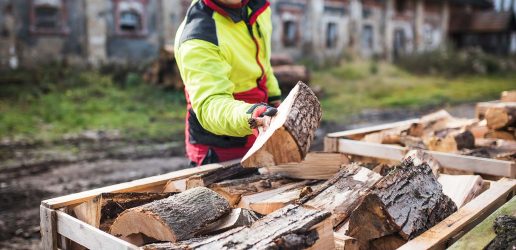
Forest Research’s online TreeAlert system, via their Tree Health Diagnostic and Advisory Service (THDAS), has received a record number of pest and disease enquiries over the past year (April 2020 to 31 March 2021), it was announced today (30 July).
As people spent more time in nature, the service received its highest number of enquiries since it was relaunched in 2014. The service is crucial in the early identification of new pests and diseases, and is used to help enable their control and track the spread of emerging problems.
Tree health enquiries in the past year concerned a wide range of species and mostly broadleaf trees. The most common tree species was oak, followed by ash and sweet chestnut.
The most commonly reported diseases include:
- Ash dieback was the most commonly reported disease in 2020, and it is now present in most parts of the United Kingdom. Ash dieback is a highly destructive fungal disease which is predicted to kill 70-90% of native ash (>100 million trees) over the next 20 years. Reports from areas where it has not already been recorded are encouraged to help monitor its spread.
- Oak processionary moth (OPM) enquiries made up almost half of all pest enquiries in 2020. OPM caterpillars are pests of the oak tree and are hazardous to human and animal health. Native to southern Europe and first detected in the UK in 2005, OPM is subject to a government-led programme of survey and control to minimise its spread and impact. OPM caterpillars can be confused with caterpillars of other species, such as buff-tip moth, gypsy moth and small eggar moth, which explains their presence among the most common enquiries. However, it is quite straightforward to tell caterpillars of the different species apart with our online guide.
- Chestnut blight was diagnosed in a number of cases in 2020. This is a serious fungal disease of sweet chestnut trees. Since 2011 the disease has been found on a restricted number of sites in the UK, principally in central and southern England. The government is taking action to suppress and eradicate the disease including surveillance and destruction of infected trees, and prohibiting the movement of susceptible planting material and wood products. Forest Research is also investigating the use of biocontrol methods based on naturally occurring viruses which infect the causal fungus and reduce its ability to cause disease.
Members of the public, conservation groups and tree and forest practitioners are encouraged to report pest and diseases to TreeAlert.
Tracking the spread of new and emerging pests and diseases is a core part of Forest Research’s work. Other pests and diseases to look out for include:
- Bark beetles in the Ips genus which are pests of coniferous trees. Some species have become established in the UK, such as the large larch bark beetle in the 1950s. More recently several outbreaks of Ips typographus (larger eight-toothed European spruce bark beetle) have been found in the UK. This beetle could cause significant damage to spruce in the UK and the government is taking fast and robust action to control the pest.
- Elm zig zag sawfly which is a newly introduced pest, first detected in the UK in 2017. Its larvae feed on elm leaves and can severely defoliate trees, damaging their health and associated biodiversity. Elm populations have not yet recovered from the introduction of Dutch elm disease.
- Acute oak decline is a disease of oak which has emerged since the 1980s and can kill mature oak trees within five years. Forest Research is pioneering research to understand the disease and protect oak trees for future generations, for example through the BAC-STOP project.
More information on common enquiries and emerging issues reported to THDAS in 2020.
Recent News
View All news
Seventeen coniferous tree species show early promise for future commercial timber production in the UK
Researchers have set up a network of nine large scale experiments across the UK to test the suitability of 17 tree species as potential alternatives for future commercial timber production.
Forest Research are looking for people involved in the harvesting, processing, transport, import, or trade of firewood in Scotland to complete an important survey.

New guide to help local authorities conduct a people survey on the social value of their treescapes
A new step by step guide to help local authorities, charities and civic societies carry out a people survey to understand social and cultural values related to trees in their area, is now available.

Seventeen coniferous tree species show early promise for future commercial timber production in the UK
Researchers have set up a network of nine large scale experiments across the UK to test the suitability of 17 tree species as potential alternatives for future commercial timber production.
Forest Research are looking for people involved in the harvesting, processing, transport, import, or trade of firewood in Scotland to complete an important survey.

New guide to help local authorities conduct a people survey on the social value of their treescapes
A new step by step guide to help local authorities, charities and civic societies carry out a people survey to understand social and cultural values related to trees in their area, is now available.

